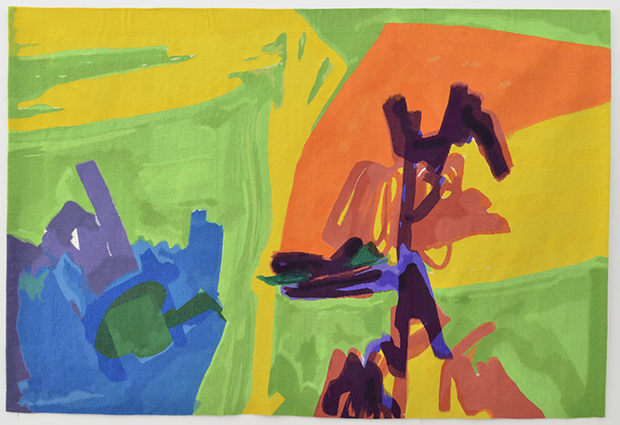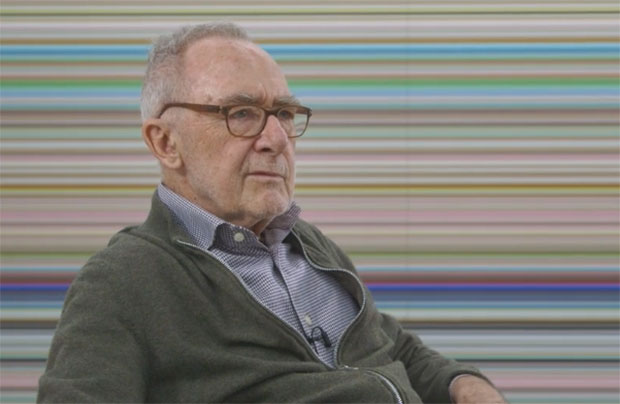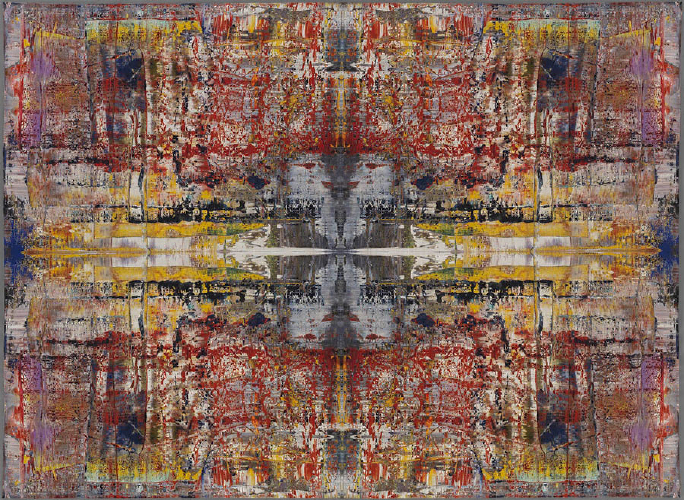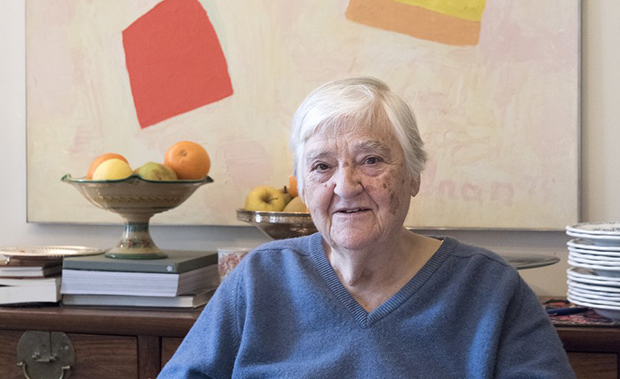
The show that links Gerhard Richter and Etel Adnan
NY's Flag Art Foundation proves the German master has quite a lot in common with a 91-year-old 'emerging' artist
Etel Adnan’s career demonstrates Gerhard Richter’s adage that “art is the highest form of hope.” The 91-year-old poet, essayist, playwright, journalist and novelist was an obscure figure within the art world, up until her inclusion in the Documenta 13 festival of 2012. Since then works by this Lebanese-born painter have found their ways into the Whitney and the Serpentine, as well as onto the auction house blocks, where they’ve gone for mid-five figures, and the pages of our contemporary painting survey Vitamin P3, where the critic Kaelen Wilson-Goldie praised them for the way in which they “speak of a richly saturated, pastel-coloured peacefulness.”
Yet this is not the only link between her and Richter. A new show at the Flag Art Foundation in New York places Adnan’s abstract works and accompanying textiles and ceramics alongside Richter’s own experiments with glass, paint and cloth.

The show, Etel Adnan | Gerhard Richter, running 19 January to 13 May, looks at the ways in which “both artists continue to challenge the concept of working in a single style or media, translating their explosive colour abstractions and painting processes to canvas, ceramic, glass, and tapestry,” says Flag.

The display includes Richter’s 1990 Abstract Painting (724-4), as well as the tapestries Musa and Yusuf, both dating from 2009 and both developed from this earlier work. There is also Sinbad from 2008, a series of 98 abstract works on glass, which take their name from Sinbad the sailor.
In turn, Adnan’s work is represented by two textile renderings of earlier, abstract paintings, 2014’s Feux d'Artifice, and 2016’s L’etang Fleuri, as well as Le Soleil amoureux de la lune, 12 ceramic panels dating from 2014, each depicting a different phase of the solar and lunar cycles.

A couple of years ago it would have seemed absurd to put Richter, whose work has been at the forefront of contemporary painting for decades, alongside so marginal a figure. Yet Flag show demonstrates not only the clear practical similarities between their work, but also how, with talent and a hope, critical acclaim can come at almost any time in life.
For more of Etel’s work get Vitamin P3; for more on Richter get Painting Beyond Pollock, and for more on hopeful - and, we trust, helpful - art adages, get Art is The Highest Form of Hope.